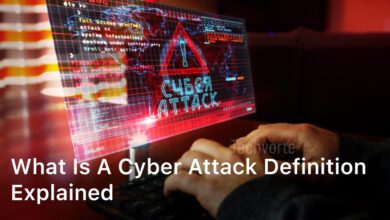Welcome to our informative article on phishing emails.
In today’s digital world, it’s essential to be aware of the signs of a phishing email to protect yourself from scams and online threats.
Phishing scams have become increasingly sophisticated, but by learning how to spot phishing email red flags and implementing effective phishing awareness tips and prevention techniques, you can safeguard your inbox and personal information.
Phishing emails are deceptive messages sent by cybercriminals with the intention of tricking you into sharing sensitive information or downloading malicious software.
Understanding the intentions behind these emails is crucial to recognizing suspicious emails and detecting phishing attempts.
By staying informed and vigilant, you can stay one step ahead of cybercriminals.
One of the first steps in identifying a phishing email is to look out for common red flags.
These red flags may include suspicious email content, improper grammar or spelling errors, generic greetings, urgent requests for personal information or unfamiliar email addresses.
By being alert to these signs, you can avoid falling victim to email fraud.
Another important aspect to consider is the suspicious content and formatting within a phishing email.
Often, these emails may contain suspicious links, misspelled URLs, mismatched logos or branding or unusual email signatures.
By paying attention to these details, you can quickly identify a phishing attempt.
In addition, it’s crucial to scrutinize the sender information and links included in an email.
Check for any inconsistencies or discrepancies between the displayed sender name and email address.
Be cautious of suspicious domains or URLs and hover over links to reveal their true destination before clicking.
In conclusion, by knowing the signs of a phishing email and taking the necessary precautions, you can protect yourself from scams and online threats.
Stay informed, stay alert, and implement phishing prevention techniques to safeguard your privacy and personal information.
Together, we can combat phishing and ensure a safer digital environment.
Understanding Phishing Emails and Their Intentions

Before we can identify the signs of a phishing email, it’s crucial to grasp what these fraudulent emails are all about and the intentions behind them.
Phishing emails are a common form of cybercrime where scammers trick individuals into revealing sensitive information or performing actions that could compromise their security.
These emails often imitate legitimate organizations or individuals, creating a false sense of trust to deceive recipients.
To stay one step ahead of cybercriminals, it’s essential to recognize suspicious emails and detect phishing attempts.
By understanding their intentions, you can become better equipped to protect yourself and your information.
Common Red Flags to Look Out For
When it comes to identifying malicious emails, being aware of the common red flags is crucial.
By paying attention to these signs, you can protect yourself from falling victim to email fraud and phishing scams. Here are some key indicators to watch out for:
- Unusual or suspicious senders: If the email is from an unknown sender or an unexpected source, proceed with caution. Be particularly wary of generic email addresses or email addresses that don’t match the purported sender.
- Urgent or threatening language: Phishing emails often create a sense of urgency or use threatening language to prompt immediate action. If you receive an email demanding urgent or immediate action, take a moment to evaluate its authenticity before responding or clicking on any links.
- Grammatical and spelling errors: While professional organizations strive for accuracy, phishing emails may contain noticeable grammatical or spelling mistakes. These errors can be an indication that the email is not legitimate.
- Requests for personal or financial information: Legitimate organizations rarely request personal or financial information via email. Be suspicious of emails asking for passwords, social security numbers, credit card details, or any other sensitive information.
- Unusual attachments or links: Be cautious of unexpected attachments or links, especially if they are from unknown sources. Always hover over links to see the actual URL before clicking on them. If the URL looks suspicious or differs from what you expected, do not click on it.
By staying alert to these red flags, you can significantly reduce the risk of falling prey to phishing emails.
Remember to trust your instincts and exercise caution when dealing with suspicious emails.
Suspicious Email Content and Formatting
Phishing emails often contain specific content and formatting characteristics that can help you identify them.
By being aware of these signs, you can quickly recognize suspicious emails and protect yourself from potential scams.
1. Generic Greetings and Salutations
Phishing emails often use generic greetings like “Dear customer” or “Dear Sir/Madam” instead of addressing you by your name.
Legitimate emails from trusted sources usually address you by your name or username.
2. Urgency and Fear Tactics
Phishing emails often try to create a sense of urgency or fear to prompt you into taking immediate action.
They may claim that your account has been compromised or that you’ll face consequences if you don’t act quickly.
Legitimate emails typically provide clear instructions without using fear tactics.
3. Poor Grammar and Spelling Mistakes
Phishing emails often contain grammar and spelling mistakes.
These errors can be an indication that the email comes from an untrustworthy source.
Legitimate emails are generally well-written and free of such errors.
4. Suspicious URLs and Hyperlinks
Phishing emails often include URLs or hyperlinks that look legitimate but actually redirect you to malicious websites.
Before clicking on any link, hover your cursor over it to view the actual URL.
If it looks suspicious or redirects to an unfamiliar website, it’s likely a phishing attempt.
5. Unexpected Attachments
Phishing emails may contain unexpected attachments or files.
These attachments can contain malware or viruses that can harm your computer or steal your personal information.
Always exercise caution before opening any attachment, especially if it comes from an unknown sender.
By paying attention to these content and formatting characteristics, you can proactively identify and avoid falling victim to phishing emails.
Paying Attention to Sender Information and Links
When it comes to identifying signs of a phishing email, paying close attention to the sender information and links included in the email is crucial.
These elements can provide important clues about the authenticity of the email and help you spot phishing scams effectively.
Here are some key things to consider:
- Sender’s email address: The first thing to check is the sender’s email address. Be wary of emails coming from suspicious or unfamiliar addresses. Legitimate organizations typically use official domain names in their email addresses, while phishing emails often use generic or misspelled addresses.
- Display name: While the sender’s email address is important, cybercriminals often manipulate the display name to appear as a trusted source. Double-check the display name to ensure it matches the actual organization or person.
- URLs and hyperlinks: Phishing emails often include malicious links disguised as legitimate URLs. Hover your mouse cursor over the link to see the actual destination URL. Be cautious if the URL looks suspicious, contains spelling errors, or redirects to a different website, as these are signs of a phishing attempt.
By being vigilant and scrutinizing the sender information and links in an email, you can protect yourself from falling victim to phishing scams and identifying malicious emails.
| Signs to Look Out For | Examples |
|---|---|
| Suspicious email addresses | [email protected] |
| Misspelled domain names | www.bnkofamrica.com |
| Generic salutations | Dear Customer |
| Unexpected attachments or downloads | Invoice.pdf.exe |
| Requests for personal or sensitive information | Username, password, SSN |
Conclusion
In conclusion, recognizing the signs of a phishing email is essential in safeguarding yourself from scams and online threats.
By familiarizing yourself with the red flags, being able to identify suspicious emails and implementing effective phishing prevention techniques, you can protect your inbox and personal information from cybercriminals.
One of the key aspects of protecting yourself from phishing emails is understanding their intentions.
By staying informed and vigilant, you can stay one step ahead of cybercriminals who are constantly evolving their tactics.
Remember, when it comes to email security, it’s important to carefully examine sender information and links, pay attention to the email’s content and formatting and be aware of any common red flags.
By staying proactive and cautious, you can significantly reduce the risk of falling victim to phishing scams.
Stay safe and take the necessary steps to keep your online presence secure.
By staying educated and implementing best practices, you can protect yourself and others from the dangers of phishing emails and fraudulent online activities.
FAQ
What are some signs of a phishing email?
Some signs of a phishing email include spelling and grammatical errors, generic greetings or calls to action, requests for personal or financial information, suspicious URLs or email addresses, and urgent or threatening language.
How can I identify phishing emails?
You can identify phishing emails by carefully examining the sender’s email address, checking for any suspicious or unfamiliar links, verifying the email’s content for inconsistencies or discrepancies, and reviewing the email for any signs of urgency or pressure.
What are some phishing email red flags?
Phishing email red flags include email addresses that don’t match the company or organization it claims to be from, misspelled or inconsistent domain names or URLs, requests for confidential information, and attachments or links that you weren’t expecting or seem suspicious.
How do I spot phishing scams?
You can spot phishing scams by being cautious of unsolicited emails, avoiding clicking on suspicious links or downloading attachments from unknown sources, regularly updating your antivirus software, and educating yourself about common phishing tactics and techniques.
How can I detect phishing attempts?
You can detect phishing attempts by closely inspecting the email’s content, looking for any spelling or grammatical errors, checking the email address of the sender, hovering over links to view the destination URL before clicking, and being skeptical of emails that require immediate actions or provide unrealistic offers or promises.
What are some phishing awareness tips?
Some phishing awareness tips include regularly updating your computer’s operating system and security software, being cautious of sharing personal or financial information online, using strong and unique passwords for your online accounts, and being wary of emails that create a sense of urgency or request sensitive information.
How can I prevent phishing emails?
You can prevent phishing emails by enabling spam filters on your email account, being cautious of email attachments and links, verifying the legitimacy of the emails by contacting the company or organization directly, and educating yourself on the latest phishing trends and techniques.
What should I do if I receive a suspicious email?
If you receive a suspicious email, it is recommended to not click on any links, download any attachments, or provide any personal information. Instead, report the email as phishing or spam to your email provider, delete the email from your inbox and trash, and consider running a security scan on your computer.





